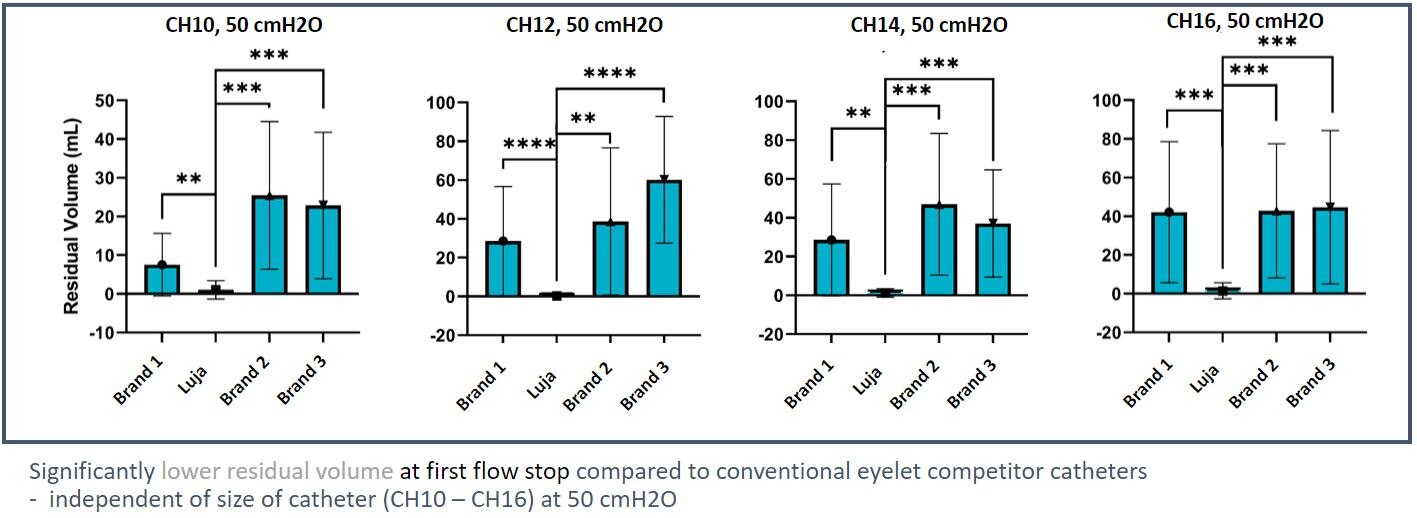Get full access with a free account
Benefits of the Coloplast® Professional Educational platform
- Full access to educational content, events and resources
- Track your progress
- Share content with your colleagues
- Share supporting material with your patient
how the porcine bladder responded to new technology / 5.1 min
We measured these UTI-related parameters for innovative micro-hole zone technology catheters (LujaTM) with a drainage zone of 80+ micro-holes and compared it to conventional, two hole eyelet catheters.
This Porcine Bladder Model study allows measurement of residual urine and mucosal suction of catheters with Micro-hole Zone Technology vs conventional eyelet catheters.1,2
This Is carried out through ex vivo testing with a porcine bladder*, where drained urine, intra catheter pressure and perceived mucosal suction is measured. A drop in the pressure indicates mucosal suction. The perceived mucosal suction was confirmed by the pressure peaks.1,2
* The lower urinary tract was extracted and used in the test, including the bladder, urethra, and ureters
Below is an example of a filled male porcine lower urinary tract inside the pressurized tank.
This is an example of a filled male porcine lower urinary tractinside the pressurized tank. The porcine LUT is pinned to the silicone mold (in pink) and connected to the tank via the urethral and ureteral fittings.
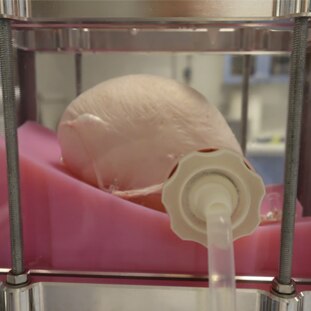
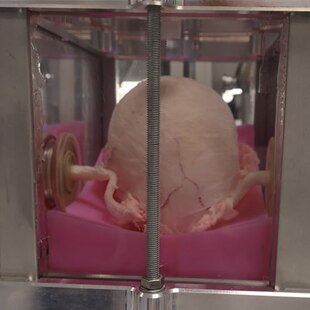
Conclusion
*Results presented below were conducted at a simulated abdominal pressure of 50 mmH2O, which is the highest pressure described in the literature, and therefore considered as worst case.
The Micro-hole Zone Technology catheter, Luja™ showed significantly lower levels of mucosal suction compared to conventional eyelet catheters - independent of size of catheter (CH10 – CH16).
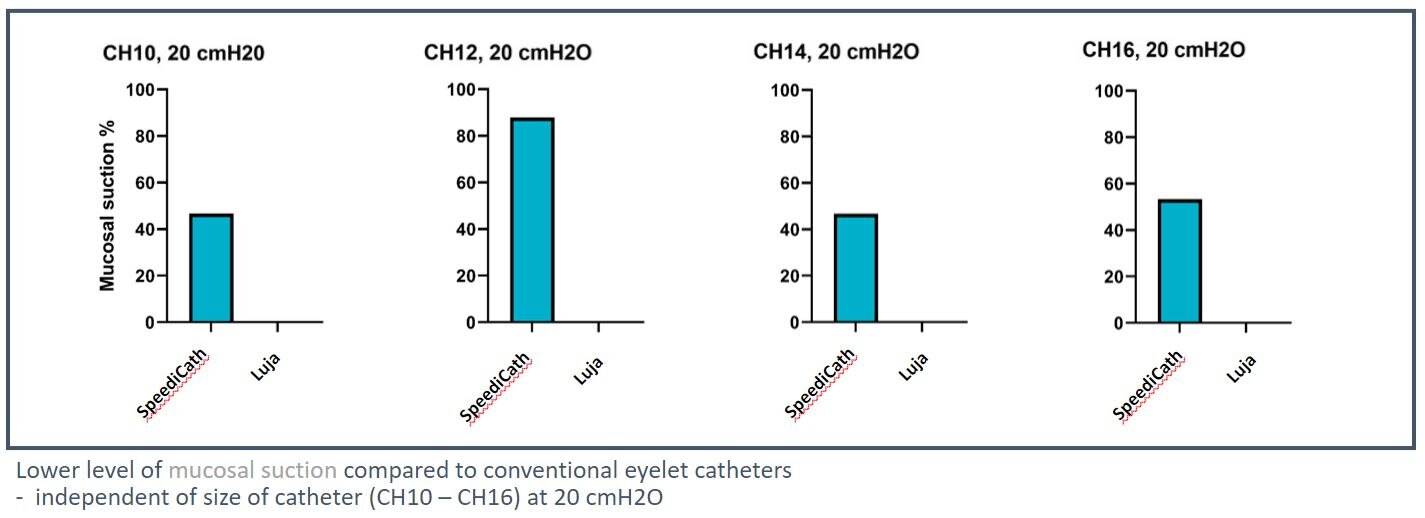
The Luja catheter showed a significantly lower level of mucosal suction compared to conventional eyelet catheters - independent of size of catheter (CH10 – CH16).
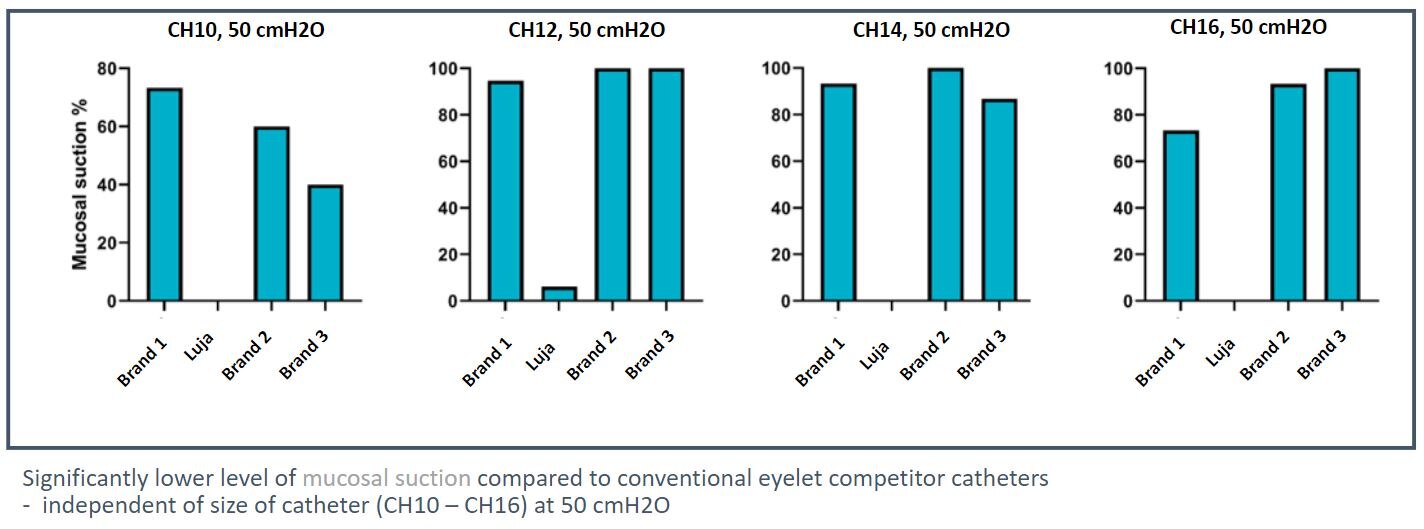
The Luja catheter showed significantly lower residual volume at first flow stop compared to conventional eyelet catheters - independent of size of catheter (CH10 – CH16).
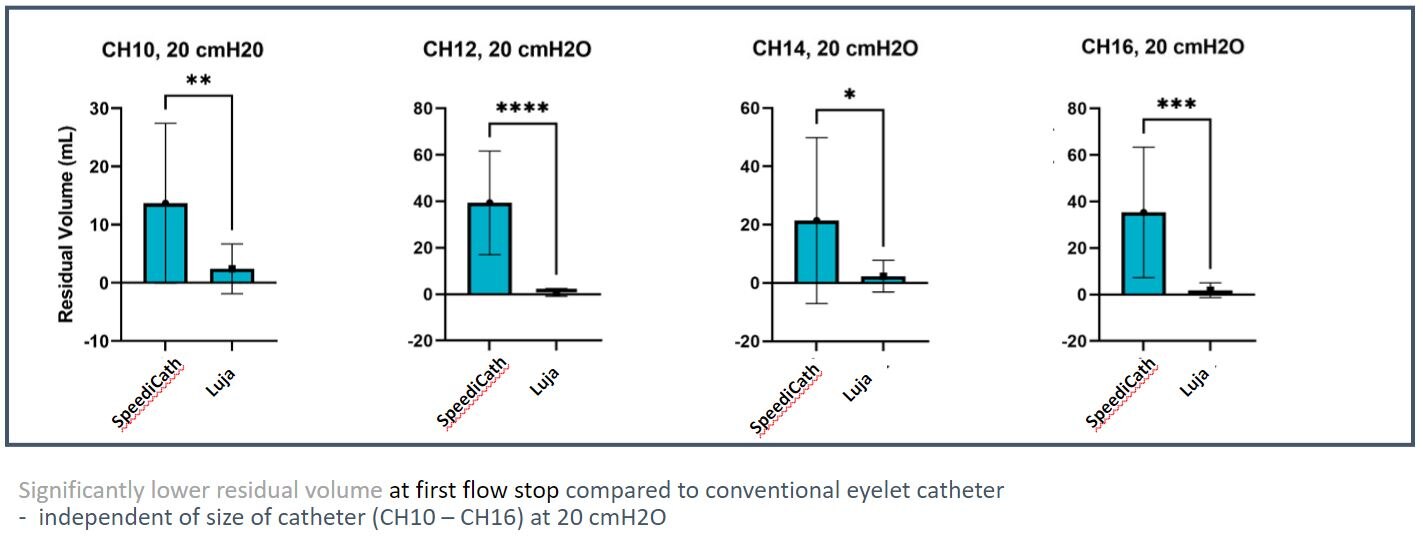
The Luja catheter showed significant lower residual volume at first flow stop compared to conventional eyelet competitor catheters - independent of size of catheter (CH10 – CH16) at 50 cmH2O
